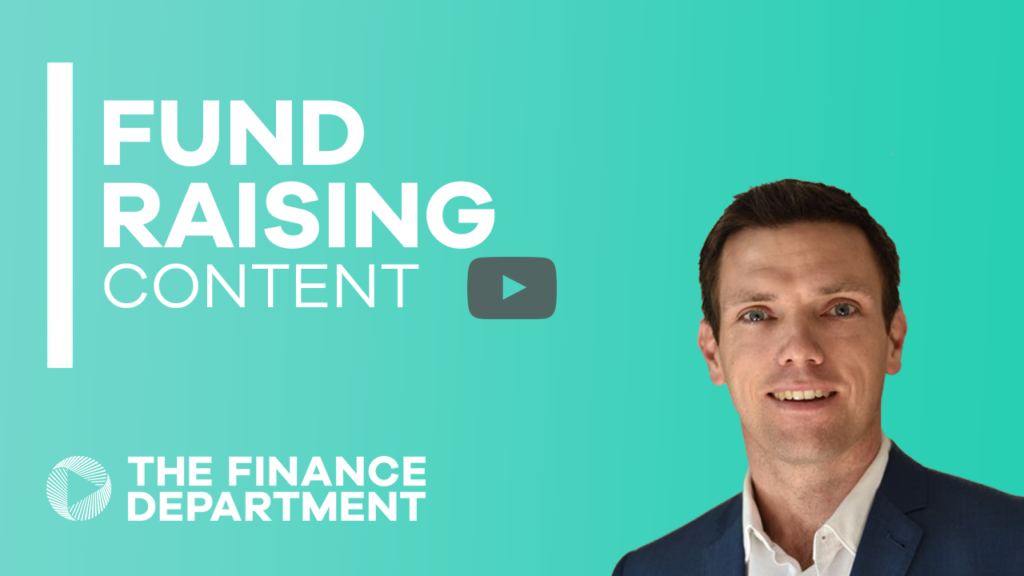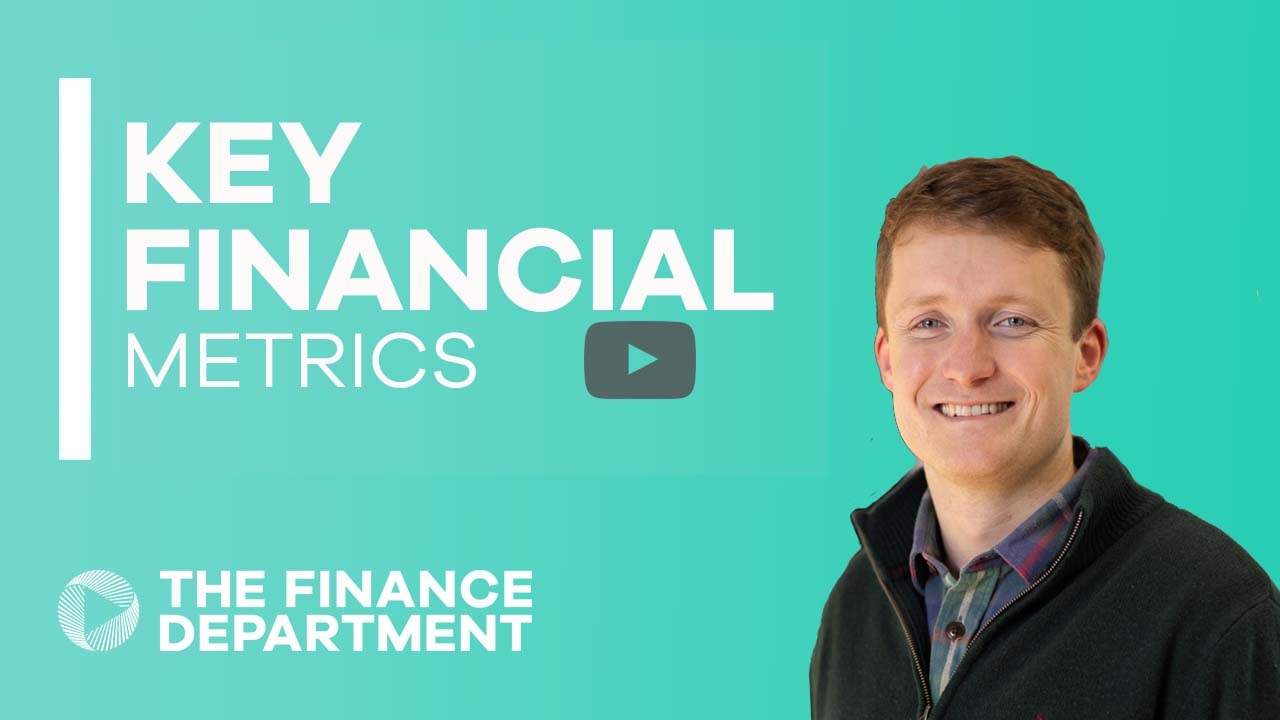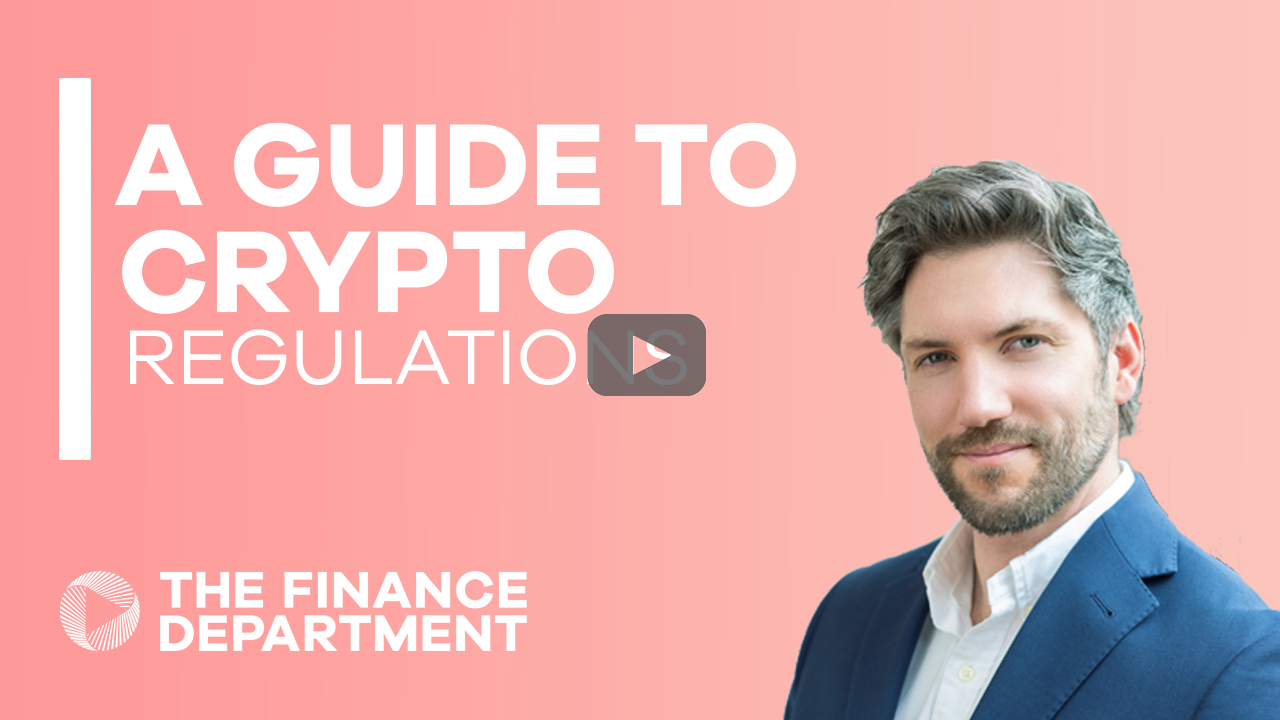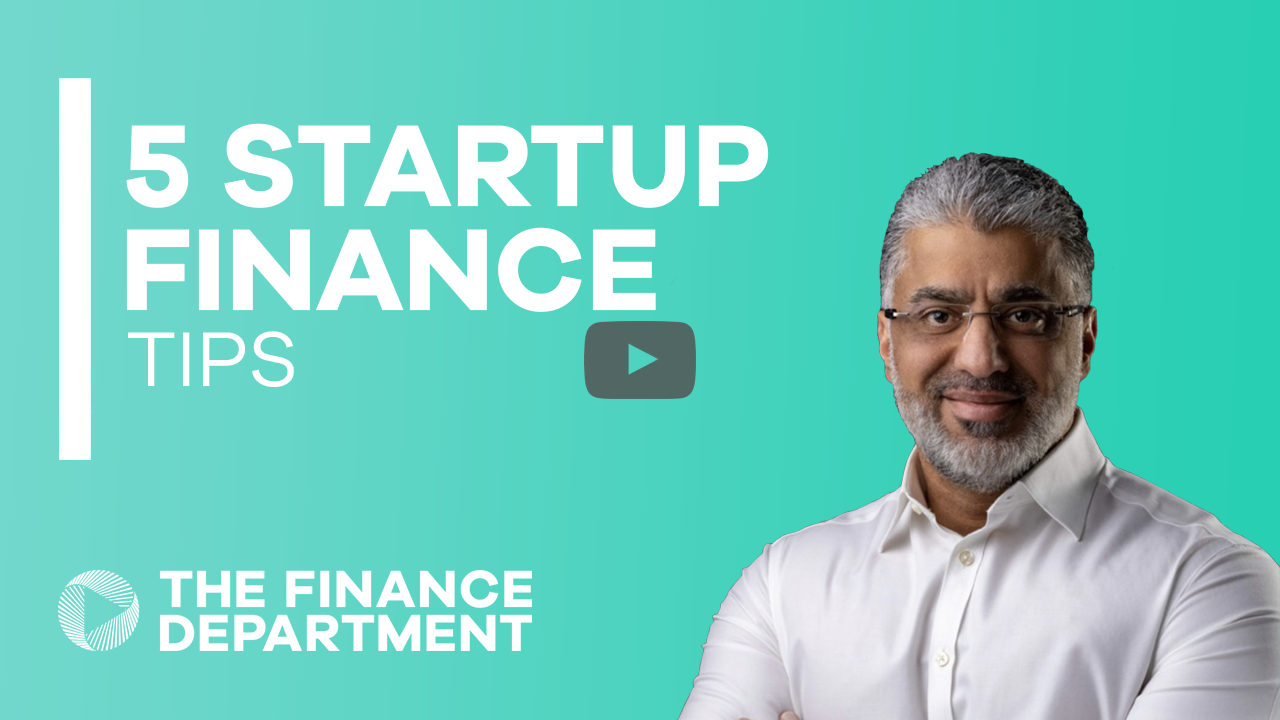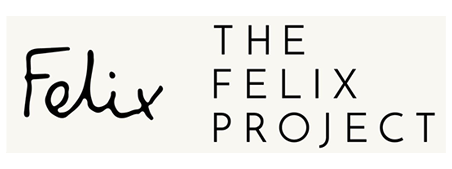Funding Rounds – The Importance of Pattern Recognition
Join today and start learning
TFD is the learning platform built for finance professionals.
This content is available as part of our bitesized video series.
Watch this video today by joining our free community.
Join today and start learning
TFD is the learning platform built for finance professionals.
This content is available as part of our bitesized video series.
Watch this video today by joining our free community.
Funding Rounds – The Importance of Pattern Recognition
Video information:
How to evolve your pitch and pitch deck as you progress through different funding rounds – you can’t use the same deck each time.
Hi, I’m Brian, and today, we are going to discuss something that all early stage companies will need to do, fundraise.
I’d like to focus specifically on how the content of your investor materials will need to change as you move from an early stage funding round through to the later stage funding rounds.
Let’s quickly digress to discuss what each funding round entails.
For the seed round, you usually trying to figure out your product, what market it is in, and what customers you’re looking to serve. The funding is used to hire your first few employees and typically a cheque size is in the order of one to two million pounds, often a lot less.
For Series A you have a product market fit, but you need capital to understand what the best business model is and to start finding some traction and growth. These cheque sizes are often a lot bigger in the 2 to 15 million pound range.
For Series B and onwards. It’s all about growth and scale, you have your product market fit, you probably got quite a bit of traction already and you’ve got some positive unit economics.
You will need the capital to hire a plethora of sales and customer and enablement teams as well as well as product development and technical skills.
These cheques are naturally a lot bigger ranging in the tens of millions of pounds and upwards.
So there’s lots of material out there on what you should be including in your investor deck. Things like problem statement solution, may be your secret source, may be the founding team. I more specifically like to focus on how this content needs to change and adapt as you move from your early stage funding rounds through to your later stage funding rounds.
And there’s one phrase that can help guide our thinking around this, pattern recognition.
All investors look for patterns in my experience, no matter the round, investors want to understand what kind of patterns they’re seeing they can then use as a heuristic to help them decide whether to invest in your company or not. So it’s best that you also understand that to make sure that you are finding ways to present positive patterns in the past that can provide an indication of future success.
The patterns that we look for in early stage companies are typically around you, the founder. With little financial information to go on, that the investors really looking to you, and what kind of pattern of success you’ve had in your past, that can help them decide whether you’ve got what it takes to take an idea and turn it into a really, really good business.
There are also other patterns available for the investor that they can look for things like product traction, market traction, any kind of customer feedback, maybe your product development life cycle versus your competitors, you know, rapid engineering iteration time frames. All of these sort of patterns can indicate that you’re on a positive course for success.
For later stage funding rounds, you will by now, have access to far more financial information that you can use to present positive patterns. These patterns should be presented across three key topics.
For traction and growth in a B2B environment, important trends to point out are maybe sales pipeline, and your sales cycle, and for a B2C business, important traction includes optimization of your sales funnel, and maybe your daily active use account, and a positive unit economics.
You certainly want to be able to demonstrate how your customer acquisition cost has maybe declined, how your churn rates are dropping, or maybe how your average revenue per user is increasing over a period of time.
And then the use of capital, you certainly want to be demonstrating how the funding that you’ve raised in your previous rounds has been used to generate a positive improvement or pattern, in the unit economics and the traction that we’ve just discussed.
You’d also need to show strong awareness and potentially a strong control of your cost base and what your potential burn rate and runway are for the rest of that funding round.
What’s really, really important in the later stages, as well as to demonstrate how the expectations and the promises that you set out in earlier rounds have or have not been met.
Often your early stage investor decks will include some financial projections, what your expectations are for a quarter or for a year. And as you reach those later stage funding rounds, a really nice pattern to demonstrate is how you’ve managed to achieve or hit those milestones that you’ve set for yourself.
I hope that these ideas can give you some good insight into preparing your next investor deck.
Brian is a seasoned finance expert who has experience spanning both the corporate world as a SVP in various finance and sales roles, as well as the consulting space, helping a variety of business to grow and prosper.
Video information:
How to evolve your pitch and pitch deck as you progress through different funding rounds – you can’t use the same deck each time.
Hi, I’m Brian, and today, we are going to discuss something that all early stage companies will need to do, fundraise.
I’d like to focus specifically on how the content of your investor materials will need to change as you move from an early stage funding round through to the later stage funding rounds.
Let’s quickly digress to discuss what each funding round entails.
For the seed round, you usually trying to figure out your product, what market it is in, and what customers you’re looking to serve. The funding is used to hire your first few employees and typically a cheque size is in the order of one to two million pounds, often a lot less.
For Series A you have a product market fit, but you need capital to understand what the best business model is and to start finding some traction and growth. These cheque sizes are often a lot bigger in the 2 to 15 million pound range.
For Series B and onwards. It’s all about growth and scale, you have your product market fit, you probably got quite a bit of traction already and you’ve got some positive unit economics.
You will need the capital to hire a plethora of sales and customer and enablement teams as well as well as product development and technical skills.
These cheques are naturally a lot bigger ranging in the tens of millions of pounds and upwards.
So there’s lots of material out there on what you should be including in your investor deck. Things like problem statement solution, may be your secret source, may be the founding team. I more specifically like to focus on how this content needs to change and adapt as you move from your early stage funding rounds through to your later stage funding rounds.
And there’s one phrase that can help guide our thinking around this, pattern recognition.
All investors look for patterns in my experience, no matter the round, investors want to understand what kind of patterns they’re seeing they can then use as a heuristic to help them decide whether to invest in your company or not. So it’s best that you also understand that to make sure that you are finding ways to present positive patterns in the past that can provide an indication of future success.
The patterns that we look for in early stage companies are typically around you, the founder. With little financial information to go on, that the investors really looking to you, and what kind of pattern of success you’ve had in your past, that can help them decide whether you’ve got what it takes to take an idea and turn it into a really, really good business.
There are also other patterns available for the investor that they can look for things like product traction, market traction, any kind of customer feedback, maybe your product development life cycle versus your competitors, you know, rapid engineering iteration time frames. All of these sort of patterns can indicate that you’re on a positive course for success.
For later stage funding rounds, you will by now, have access to far more financial information that you can use to present positive patterns. These patterns should be presented across three key topics.
For traction and growth in a B2B environment, important trends to point out are maybe sales pipeline, and your sales cycle, and for a B2C business, important traction includes optimization of your sales funnel, and maybe your daily active use account, and a positive unit economics.
You certainly want to be able to demonstrate how your customer acquisition cost has maybe declined, how your churn rates are dropping, or maybe how your average revenue per user is increasing over a period of time.
And then the use of capital, you certainly want to be demonstrating how the funding that you’ve raised in your previous rounds has been used to generate a positive improvement or pattern, in the unit economics and the traction that we’ve just discussed.
You’d also need to show strong awareness and potentially a strong control of your cost base and what your potential burn rate and runway are for the rest of that funding round.
What’s really, really important in the later stages, as well as to demonstrate how the expectations and the promises that you set out in earlier rounds have or have not been met.
Often your early stage investor decks will include some financial projections, what your expectations are for a quarter or for a year. And as you reach those later stage funding rounds, a really nice pattern to demonstrate is how you’ve managed to achieve or hit those milestones that you’ve set for yourself.
I hope that these ideas can give you some good insight into preparing your next investor deck.
Brian is a seasoned finance expert who has experience spanning both the corporate world as a SVP in various finance and sales roles, as well as the consulting space, helping a variety of business to grow and prosper.
Video information:
How to evolve your pitch and pitch deck as you progress through different funding rounds – you can’t use the same deck each time.
Hi, I’m Brian, and today, we are going to discuss something that all early stage companies will need to do, fundraise.
I’d like to focus specifically on how the content of your investor materials will need to change as you move from an early stage funding round through to the later stage funding rounds.
Let’s quickly digress to discuss what each funding round entails.
For the seed round, you usually trying to figure out your product, what market it is in, and what customers you’re looking to serve. The funding is used to hire your first few employees and typically a cheque size is in the order of one to two million pounds, often a lot less.
For Series A you have a product market fit, but you need capital to understand what the best business model is and to start finding some traction and growth. These cheque sizes are often a lot bigger in the 2 to 15 million pound range.
For Series B and onwards. It’s all about growth and scale, you have your product market fit, you probably got quite a bit of traction already and you’ve got some positive unit economics.
You will need the capital to hire a plethora of sales and customer and enablement teams as well as well as product development and technical skills.
These cheques are naturally a lot bigger ranging in the tens of millions of pounds and upwards.
So there’s lots of material out there on what you should be including in your investor deck. Things like problem statement solution, may be your secret source, may be the founding team. I more specifically like to focus on how this content needs to change and adapt as you move from your early stage funding rounds through to your later stage funding rounds.
And there’s one phrase that can help guide our thinking around this, pattern recognition.
All investors look for patterns in my experience, no matter the round, investors want to understand what kind of patterns they’re seeing they can then use as a heuristic to help them decide whether to invest in your company or not. So it’s best that you also understand that to make sure that you are finding ways to present positive patterns in the past that can provide an indication of future success.
The patterns that we look for in early stage companies are typically around you, the founder. With little financial information to go on, that the investors really looking to you, and what kind of pattern of success you’ve had in your past, that can help them decide whether you’ve got what it takes to take an idea and turn it into a really, really good business.
There are also other patterns available for the investor that they can look for things like product traction, market traction, any kind of customer feedback, maybe your product development life cycle versus your competitors, you know, rapid engineering iteration time frames. All of these sort of patterns can indicate that you’re on a positive course for success.
For later stage funding rounds, you will by now, have access to far more financial information that you can use to present positive patterns. These patterns should be presented across three key topics.
For traction and growth in a B2B environment, important trends to point out are maybe sales pipeline, and your sales cycle, and for a B2C business, important traction includes optimization of your sales funnel, and maybe your daily active use account, and a positive unit economics.
You certainly want to be able to demonstrate how your customer acquisition cost has maybe declined, how your churn rates are dropping, or maybe how your average revenue per user is increasing over a period of time.
And then the use of capital, you certainly want to be demonstrating how the funding that you’ve raised in your previous rounds has been used to generate a positive improvement or pattern, in the unit economics and the traction that we’ve just discussed.
You’d also need to show strong awareness and potentially a strong control of your cost base and what your potential burn rate and runway are for the rest of that funding round.
What’s really, really important in the later stages, as well as to demonstrate how the expectations and the promises that you set out in earlier rounds have or have not been met.
Often your early stage investor decks will include some financial projections, what your expectations are for a quarter or for a year. And as you reach those later stage funding rounds, a really nice pattern to demonstrate is how you’ve managed to achieve or hit those milestones that you’ve set for yourself.
I hope that these ideas can give you some good insight into preparing your next investor deck.
Brian is a seasoned finance expert who has experience spanning both the corporate world as a SVP in various finance and sales roles, as well as the consulting space, helping a variety of business to grow and prosper.

